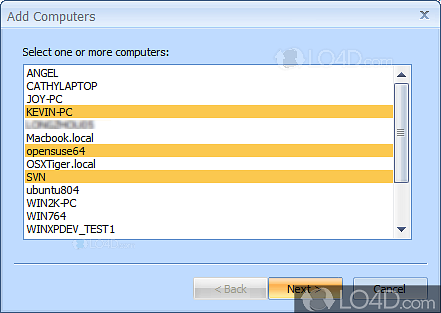
Since the actually measured power consumption is less than 1uA, the RTC can run for over 10 years with a CR2032 backup battery. ODROID-N2 has an on-board RTC component, NXP PCF8563, interfaced to the I2C bus and can use a backup battery as an alternative power source while the main power source is absent.
#NEOROUTER ODROID SOFTWARE#
The “Petitboot” software provides a user friendly interface and allows users to select a boot media. The on-board SPI memory is 8MB in size and can include the bootstrap binaries, U-boot, bare minimum Linux kernel, and a ramdisk that includes “Petitboot”. ODROID-N2 can boot from on-board SPI memory instead of uSD memory or eMMC cards. Signal to Noise Ratio : 1KHz (384KHz, 32bit, 2-ch) You can enjoy Hi-Fi sound quality without an external expensive audio DAC. ODROID-N2 has an on-board high quality 384Khz/32bit stereo audio line output.ĭynamic range and SNR is near 100dB and Total-Harmonic-Distortion is lower than 0.006%. But S922X can keep using the UHS mode with the eMMC module simultaneously. The previous S905 SoC couldn’t activate the UHS mode once the system boots from eMMC. Using properly implemented UHS dynamic voltage scaling, the sequential read and write speed is over 70MB/s and 55MB/s respectively. Sequential read and write speed is over 150MB/s and 125MB/s respectively.ĤK random access performance is reasonably fast too. Since four USB host ports share a single root hub, the transfer rate must be lower if you use multiple USB devices at the same time. The average ~340MB/s of throughput should be acceptable for many application. We measured the USB transfer speed with a UAS capable SSD.

So we believe the large stock passive heatsink is enough for very heavy computing loads.Ĭmd : stress-ng –cpu 6 –cpu-method matrixprod & glmark2-es2-fbdev –off-screen –run-foreverīut you will meet a throttling phenomenon if you overclock the CPU frequency to 2.4Ghz and there is no cooling fan when your room temperature is higher than 30☌.Īccording to our iperf test result, the throughput performance was near 1Gbps.

We ran the test within a chamber that keeps the ambient temperature at 35☌. To check the thermal throttling, we ran some heavy CPU and GPU loads together on the SoC and monitored temperature. Each platform’s sgminer was compiled with the latest ARM Compute Library v18.11. The GPU powered hash computing rate on N2 is over 30% faster than N1.Īll three SBC ran Lyra2rev2 simultaneously on a shared network. GPU performance was measured with glmark2-es2 “–off-screen” option. There are two Shader Processors in the GPU and each core has three Execution Engines. The Mali-G52 is the second Bifrost-based mainstream GPU from Arm. The Mali-G52 runs at 800Mhz and is ~10% faster than Mali-T860MP4 in ODROID-N1.

Heatsink size comparison : The system height decreased from 34mm to 29mm approximately thanks to the slimmer heatsink.ĭhrystone-2, Double-Precision Whetstone, Sysbench and Memory bandwidth benchmark results show the N2+ system performance comes out ahead of other popular ARM SBCs. The CPU is placed on the bottom side of the PCB to establish great thermal characteristics.ġ x AV Out (Stereo Audio with Composite video) The large metal housing heatsink is designed to optimize the CPU and RAM heat dissipation and minimize throttling. The N2+’s DDR4 RAM is running at 1320Mhz with 1.2volt low power consumption. The CPU multi-core performance is around 20% faster and the GPU is 10% faster than the N1.

Thanks to the modern 12nm silicon technology, the A73 cores run at 2.2Ghz without thermal throttling using the stock metal-housing heatsink allowing a robust and quiet computer. The main CPU is based on big.Little architecture which integrates a quad-core ARM Cortex-A73 CPU cluster and a dual core Cortex-A53 cluster with a new generation Mali-G52 GPU. – On-board RTC backup battery holder is mounted on the board. – Maximum CPU clock of Dual-core Cortex-A53 is increased to 2.0Ghz from 1.9Ghz. – Maximum CPU clock of Quad-core Cortex-A73 is increased to 2.4Ghz from 1.8Ghz.


 0 kommentar(er)
0 kommentar(er)
